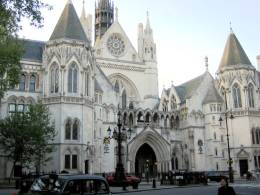Wandsworth Council’s Growth Plan, celebrated by itself as “ambitious” last month, actually commits the authority to building 28% fewer homes than required by the London Plan.
The plan says it will build approximately 1,400 homes per year over the next decade: 550 fewer than the 1,950-per-year target set for Wandsworth in the London Plan adopted in 2021.
The figures highlight a growing gap between the council’s public messaging about its housing delivery and what it actually intends to do.
The contradiction was uncovered by Clapham Junction Insider, whose detailed analysis of planning documents revealed the shortfall between Wandsworth’s strategic housing obligations and what the Growth Plan commits to deliver.
The numbers
The arithmetic is straightforward. The London Plan, adopted in 2021, set Wandsworth a ten-year target of 19,500 homes for the period 2019/20 to 2028/29 – an average of 1,950 homes per year.
Wandsworth’s Growth Plan 2025, published in July, commits to 14,400 homes over ten years – approximately 1,400 per year. The difference represents 550 fewer homes per year, or 5,500 homes over the decade: a 28% reduction from the strategic target.
When the Growth Plan was announced, the council’s press release made no mention of this reduction. Instead, it emphasised its “listening council” approach and described the plan as setting out “how the Council will create opportunities for everyone to thrive.”
Another press release, this time just a few days ago, crowed about how Wandsworth has hit “an incredible milestone” by producing its 500th home. But in another sign that Wandsworth Council is misleading either itself or voters, it has been forced to defend its figures and approach to housing to the independent Planning Inspector this month, in hearings that could see Wandsworth’s rules torn up.
As part of that hearing process, one expert argued that the council had got things badly wrong, causing developers to flee, and the result, he explained, is “why the only crane in Putney today is on a council owned site.”
Why this matters
The reduced target comes as the government calls for significantly increased housing delivery across London. In September 2024, the government confirmed that London should aim for 81,000 new homes per year – well above current delivery rates across the capital.
Wandsworth’s reduced target moves in the opposite direction from national housing policy at a time when the government is emphasizing the need to “urgently deliver more homes” to tackle the housing crisis.
Clapham Junction Insider’s analysis also highlights wider challenges facing Wandsworth’s housing delivery, including the exit of developer Taylor Wimpey from the Winstanley and York Road regeneration project.
Putney.news continues to try to find out why the council paid the developer £24.5m to exit the partnership and has now formally complained to the Information Commission’s Office (ICO) after months of efforts by the council to withhold information about the use of public money.
Taylor Wimpey’s own accounts record a £13.6 million loss on the project, though the full cost to Wandsworth taxpayers remains obscured by the council’s claims of commercial confidentiality.
Wider context
The reduction in Wandsworth’s housing targets reflects broader difficulties across London’s housing market. In October 2025, the government temporarily reduced affordable housing quotas from 35% to 20% in an attempt to stimulate development, acknowledging that housebuilding in the capital had “shrunk to just a few thousand units a year.”
That temporary measure, which has attracted criticism from homelessness charities, is set to expire on March 31, 2028.
The challenge for Wandsworth is particularly acute. While the government moves to lower affordable housing requirements to encourage development, Wandsworth is attempting to raise its target to 50% – a policy the Mayor’s own planning team has warned “appears to be unviable.”
Developers argue that that target makes projects financially impossible. It is no coincidence that Putney has seen no significant new housing development for two years, with agents describing a system “paralysed by uncertainty.”
The Growth Plan’s reduced housing numbers may reflect this viability squeeze – caught between the council’s ambition to deliver more affordable housing and the economic reality that makes development difficult at current policy levels.
What makes this case noteworthy is not the difficulty of meeting targets – that’s a challenge facing councils across the capital – but the gap between the council’s public messaging about its “ambitious” plans and the reality both on the ground and in its own documents.
Accountability Statement
We contacted:
Cllr Simon Hogg
Leader of Wandsworth Council
Request sent: 16 November 2025
Status as of publication: No response received.
Questions asked (click to expand)
The Growth Plan was announced on October 27 with a press release emphasizing the council’s “ambitious” approach to housing. Why wasn’t the reduction from the London Plan target of 1,950 homes per year mentioned in that announcement?
Can you confirm that the Growth Plan commits to approximately 1,400 homes per year (14,400 over ten years), and if so, how does the council reconcile this with the London Plan target of 1,950 per year?
Given that the government is calling for significantly increased housing delivery across London (81,000 homes per year), how does Wandsworth’s reduced target align with national housing policy?
Does the council have plans to meet the original London Plan target of 1,950 homes per year, or has this target been formally revised downward?











